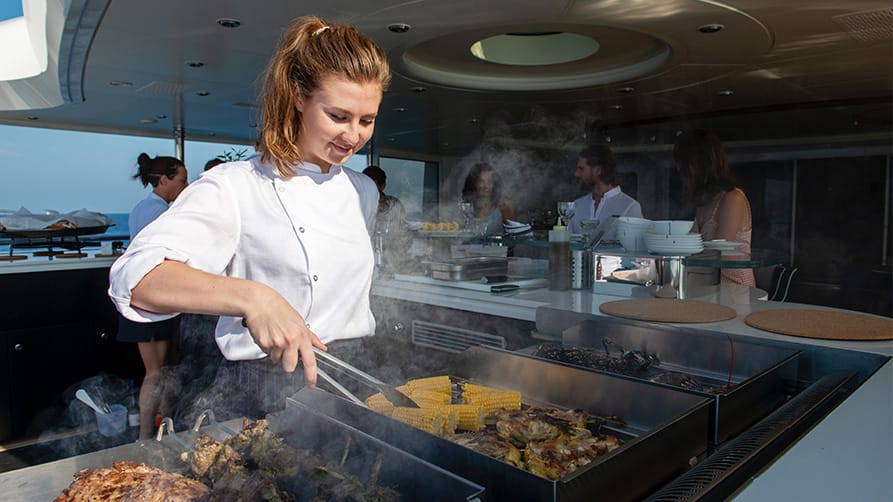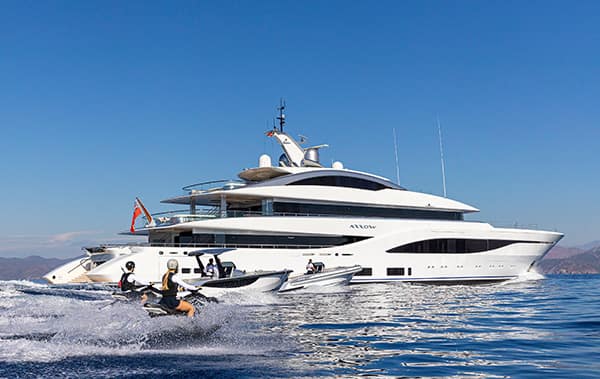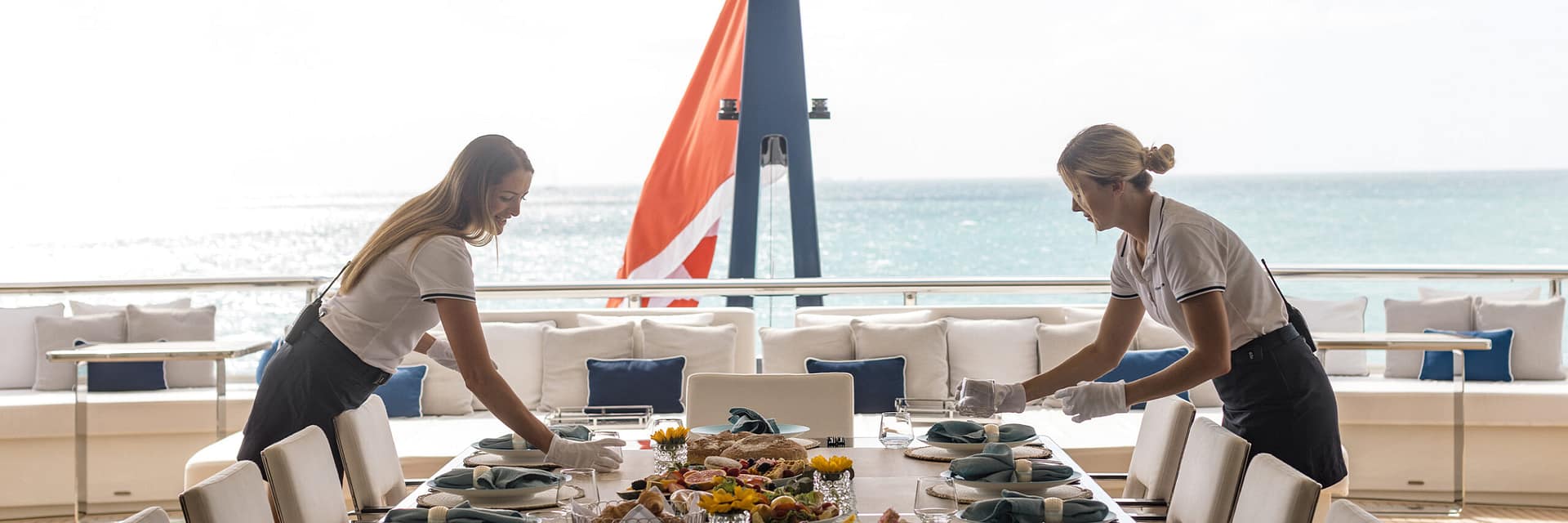A guide to: How to tackle high-season burnout
The yachting high season can be a very stressful period, which can lead to burnout. This can have a negative effect on crew welfare and also reduce the quality of service we provide for our clients. This guide explores the safety concerns, the physical and phycological impact, the signs, and the best ways to mitigate burnout onboard.
Burnout among yacht crew members is an increasingly prevalent issue that needs urgent attention. During high season, time onboard can be particularly stressful, with increased guest expectations, extended working hours and limited shore leave. This relentless pace can lead to physical and mental exhaustion, impacting not only the wellbeing of the crew, but the overall operation and atmosphere aboard the yacht.
Addressing burnout is crucial for maintaining a healthy, motivated, and efficient crew. Our guide takes you through its impact, the signs and symptoms and ways to raise concerns of these issues onboard.
The impact of burnout: crew, safety & services
Burnout leads to a decline in the quality and productivity of work. This is where errors become more frequent, and attention to detail may fall affecting the reliability and consistency of work and safety onboard. Tasks such as launching tenders, crane operations and navigational watch are major safety risks, and having a crew that is fatigued poses huge safety risks for the crew, guests and yacht.
Individuals experiencing burnout often feel a lack of motivation and engagement with their work and personal interests. This can lead to a decrease in job satisfaction and overall life satisfaction, causing higher turnover rates as crew search for new careers. This turnover increases recruitment and training costs which all directly affect the operational costs.


When crew are burned out, they may be less patient, empathetic, and unable to provide high-quality customer service. This leads to decreased service onboard the yacht and when living in such confined spaces this further contributes to the overall dynamic and culture onboard.
Signs of burnout: what to look out for?
Burnout presents itself in a number of ways, these can be characterised by:
1. Chronic Fatigue and Insomnia
• Persistent exhaustion, even after a full night’s sleep.
• Difficulty falling or staying asleep, leading to a constant state of tiredness.
2. Reduced Performance and Productivity
• Decline in work performance and efficiency.
• Trouble concentrating, increased forgetfulness, and difficulty in completing tasks.
3. Emotional Exhaustion
• Feeling overwhelmed, drained, and unable to cope with daily demands.
• Increased feelings of cynicism, detachment, and lack of motivation.
4. Physical Symptoms
• Frequent headaches, muscle pain, gastrointestinal issues, and other stress-related ailments.
• Lowered immunity, leading to increased frequency of illnesses.
5. Negative Attitude and Irritability
• Increased irritability, impatience, and frustration with colleagues, clients, or family members.
• Pervasive feelings of negativity, hopelessness, and a general lack of satisfaction with work and life.


How to raise concerns of personal or colleague burnout?
Onboard a yacht, it’s essential to empower the crew to feel comfortable discussing their feelings with colleagues, Heads of Departments, or the Captain. Creating this open and supportive culture starts from the top, and the Captain should actively take measures to educate the crew and leaders onboard about the importance of communication and mental health.
Care in action
• Create an environment where team members feel comfortable discussing their concerns without fear of judgment or retaliation.
• Be observant and proactive – hold regular 1:1 meetings with your team members to check in on their well-being and workload.
• Provide empathy and support – listen actively and empathetically to your team members’ concerns. Acknowledge their feelings and experiences without dismissing them.
• Implement preventive measures – ensure workloads are manageable and distribute tasks evenly among team members. The hours of works and rest are a critical part of monitoring crews hours onboard.
• Promote mental health resources – raise awareness about available mental health resources and encourage your team to use them. This could include workshops, stress management training, and access to professional counselling.
• Lead by example – model healthy work habits by taking breaks, setting boundaries, and prioritising your well-being.
For further information and resources on best practices to support your team, please get in touch with the Edmiston Management team today.







